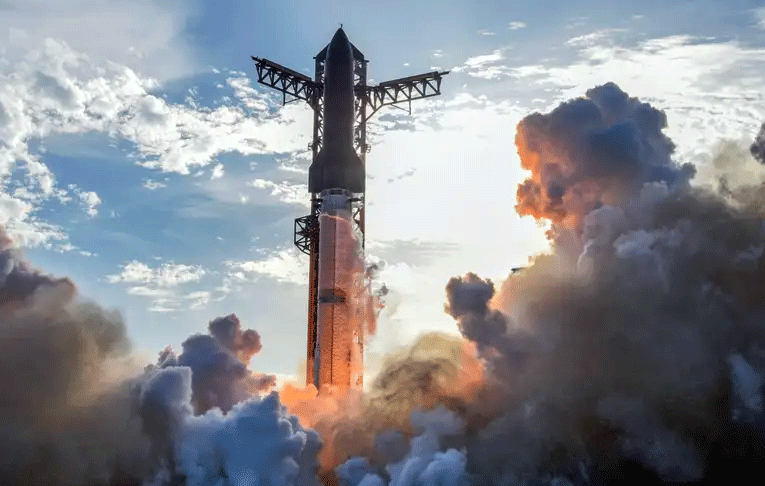SpaceX Successfully Completes Final Test Flight of Starship V2, Paving Way for Version 3
SpaceX has reached a significant milestone in its Starship program with the successful completion of the 11th test flight of its Starship rocket. The flight, which took place on October 13, 2025, marked the final test of the second-generation Starship design, known as Version 2 or V2. This successful test flight has set the stage for the development of Version 3, which is expected to debut next year.
A Near-Perfect Test Flight
The Starship rocket, powered by 33 methane-fueled Raptor engines, lifted off from SpaceX’s test site in Starbase, Texas, and carried the stainless steel spacecraft halfway around the world to the Indian Ocean. The rocket executed its flight plan flawlessly, with the only notable issue being a minor problem with one of the engines during descent. However, this issue did not impact the overall success of the flight.
The mission was a significant test of the Starship’s capabilities, and it demonstrated the rocket’s ability to perform complex maneuvers, including a precise splashdown in the Gulf of Mexico. The Super Heavy booster, which was reused from a previous flight in March, also validated a new engine configuration for its landing burn.
Overcoming Challenges
The Starship V2 had faced several challenges in the past, including premature endings to its first three test flights due to propulsion problems and a fuel leak. Another test vehicle exploded on a test stand in Texas in June. However, SpaceX teams were able to right the program with a successful test flight in August, which marked the first time Starship V2 made it all the way to splashdown.
Key Takeaways from the Test Flight
- Successful Demonstration of Reentry and Splashdown: The Starship spacecraft successfully reentered Earth’s atmosphere and splashed down in the Indian Ocean, demonstrating its ability to withstand the intense heat of reentry.
- Validation of New Engine Configuration: The Super Heavy booster validated a new engine configuration for its landing burn, which will be used in future versions of the rocket.
- Testing of Heat Shield Materials: The test flight provided valuable data on the performance of the heat shield materials, including the “crunch wrap” material used to seal gaps between the ship’s ceramic tiles.
- Deployment of Payloads: The Starship spacecraft deployed eight dummy payloads, simulating the deployment of Starlink satellites.
What’s Next for SpaceX?
With the successful completion of the Starship V2 test flight, SpaceX is now focused on developing Version 3 of the rocket. The new version is expected to feature significant upgrades, including a taller structure and more powerful engines. SpaceX is also planning to upgrade its launchpad to accommodate the new version of the rocket.
The Starship program is a crucial part of SpaceX’s plans to send humans to the moon and Mars. NASA has already chosen Starship to be the first crewed lander for its Artemis program, which aims to put boots on the moon for the first time since the Apollo era. With the successful test flight of Starship V2, SpaceX is one step closer to achieving its goal of making humanity a multi-planetary species.
Conclusion
The successful test flight of Starship V2 is a significant milestone for SpaceX and marks a major step forward in the development of the Starship program. With its powerful Raptor engines and advanced technology, the Starship rocket is poised to play a critical role in future space missions, including lunar and Mars missions. As SpaceX continues to push the boundaries of space technology, the possibilities for human spaceflight are becoming increasingly exciting






